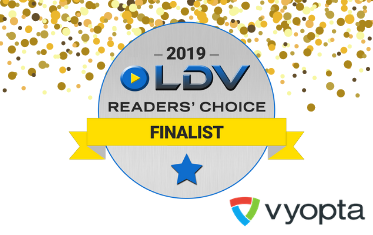If you didn’t make it out to Silicon Valley last week for Collab Week Silicon valley, never fear. We have an in-depth look at the three day event. If you’re just tuning in, make sure to read part one of our coverage for a look at an eventful Day 1 at Intuit in Mountainview. If you’d like to review the presentations in-full, you can find those here.
Day two was hosted by Poly in San Jose. Nemertes Research analyst and NoJitter contributor, Irwin Lazar kicked off the conversation with a by-the-numbers look at Workplace Collaboration projects and their impact on businesses.
The project began with interviewing 14 IT leaders in detail to establish parameters and then surveying another 631 to gather additional data. Those who took part in the research came from a range of company sizes and regions.
The data gathered was on multiple providers and technologies including: calling, team collaboration, meetings, management, headsets, SIP, and future technology adoption. The focus on the research was on uncovering adoption, total cost of ownership, and measuring success.
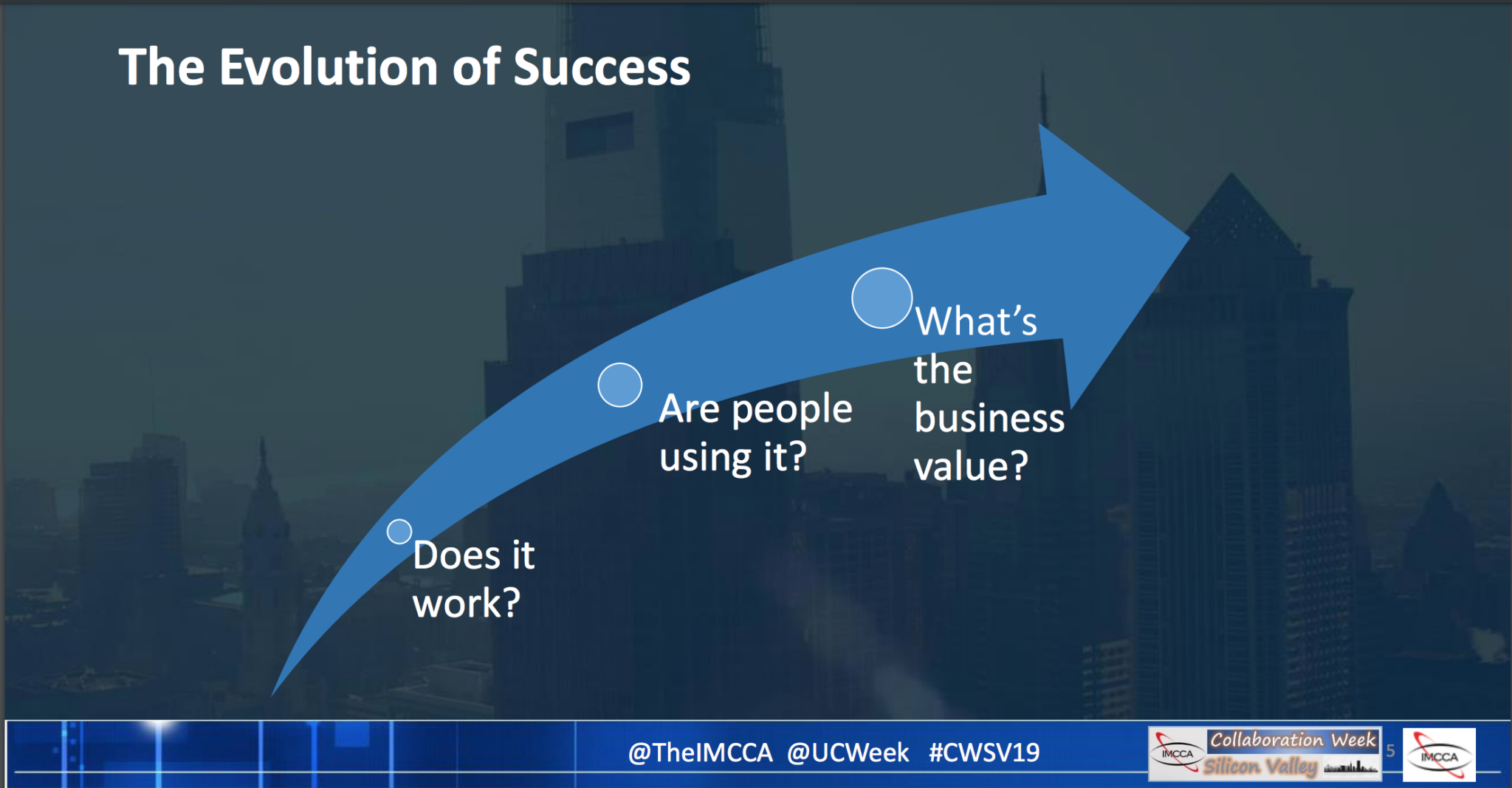
As detailed in this slide, success evolved from: “Does it work?” to “Are people using it?” to finally, “What’s the business value?”
What Irwin found is that only 23% of the participants in the study have measured success from a workplace collaboration project.
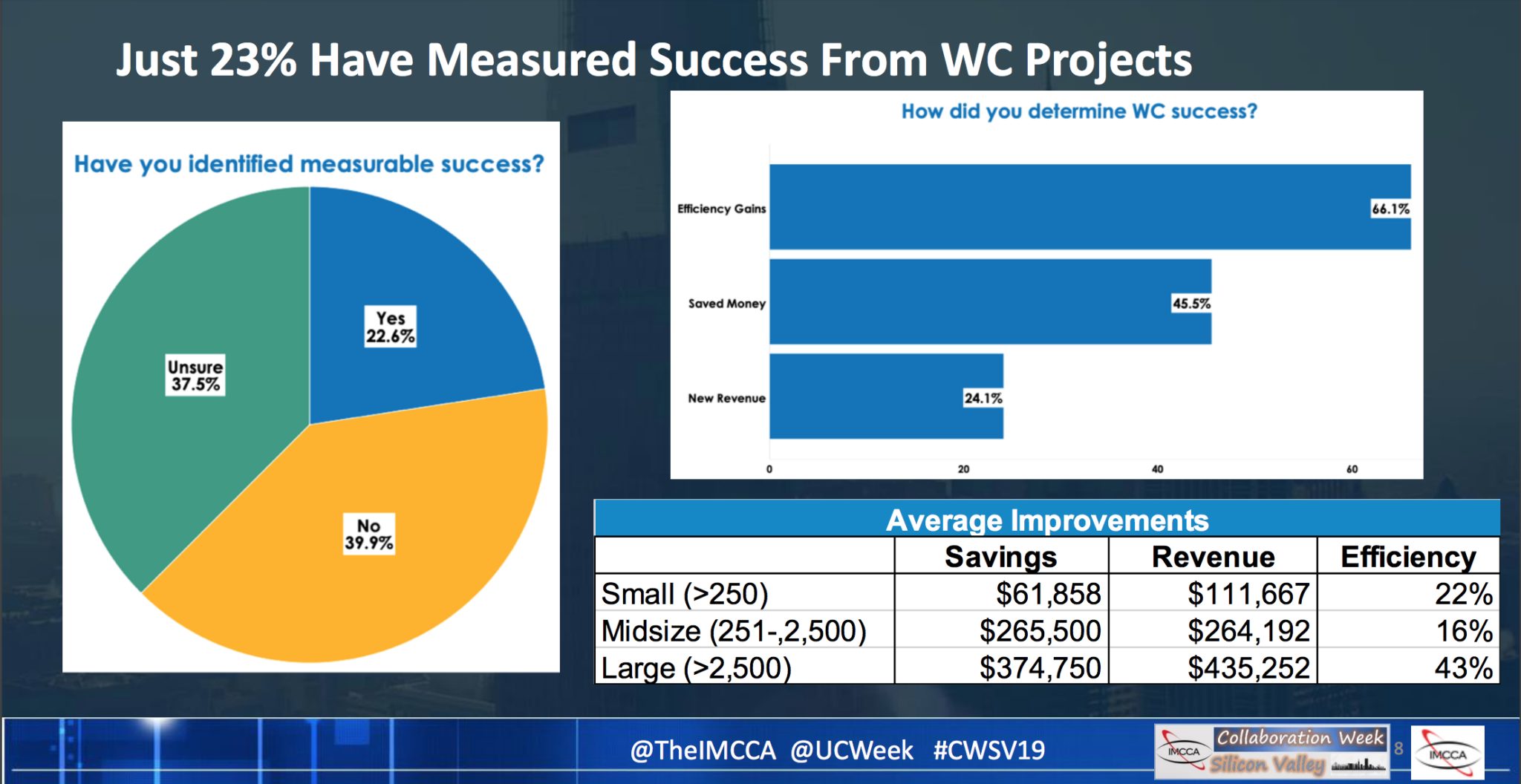
When looking at those companies who did measure success, there were a few commonalities.
Those companies who showed success tended to centrally fund their workplace collaboration budget, spend $213 per employee per year on collaboration applications, rely less on open workspaces, have an increasing number of remote workers, and leverage a best-of-breed vendor strategy. They also used team collaboration as a work hub.
In terms of companies who showed revenue increases related to their workplace collaboration project, sales teams tended to 10-20% higher close rates when using video. Better turn those cameras on!
When it came to cost savings, the numbers just kept growing:
PBX replacement – $90,000 1st year savings
Cloud UCaaS – $625,000 1st year savings
Vendor Consolidation – $1.8 M 1st year savings
SIP Trunking – $200,000 annual savings
Eliminate audio conferencing – $900,000 annual savings
While less quantifiable, efficiency gains are also important. Companies who extended video to all remote work locations saw a multi-day reduction in processing changes. Those who implemented UC saw a 25% improvement in process times. Those who implemented team collaboration saw reductions in email and meetings as well as 5-10% faster decision-making time for average project phases.
In order to show the true value of your workplace collaboration project, Irwin suggests the following:
- Focus on measuring the business value of collaboration investments
- Model before and after
- Consider additional benefits
- Note that efficiency gains may lead to savings/revenue benefits
Day 2 continued with Dave Michels of TalkingPointz telling us all to get off his lawn! No seriously, he did.
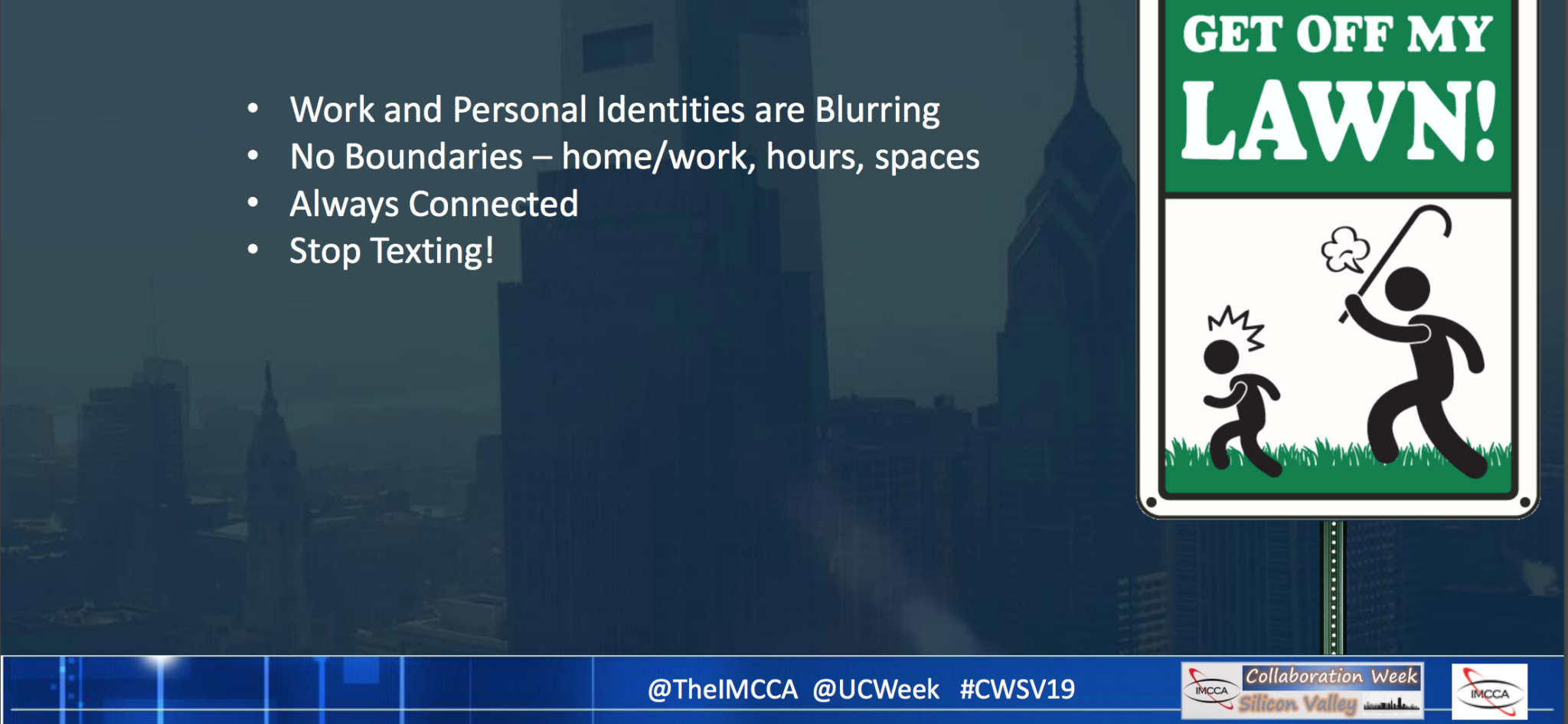
Then he went on to hilariously compare the history of enterprise communications to a cheese pizza where voice was the cheese and the toppings were things like IM/Presence, Mobile Clients, Unified Messaging, Softphone, Conferencing, and Contact Center Combo. But now, all of a sudden (or maybe not so suddenly) video is the cheese on the enterprise comms pizza. Anyone else really hungry now?
Dave celebrated video as the new phone. As we know, landlines are being replaced with things like FaceTime, Skype, Hangouts and other video apps. He termed it the perfect storm of supply and demand since it’s so, so EASY to provide video collaboration as the technology is getting cheaper, easier, and better.
Dave’s big prediction?
“Meetings, even when all participants are at the same location, will be preferred over a video service.” – Dave Michels
Day 2 capped off with the industry Gala dinner in which industry veteran, Bob Haggerty, was awarded a Lifetime Achievement award by the IMCCA.
Later, Kamalina Czerniak represented Vyopta on the industry panel led by Dr. S. Ann Earon to discuss the state of the industry and how Vyopta will help shape the future of the industry.
The highlight of Day 3 at Amazon (besides the ice cream which I did not actually have the presence of mind to grab) was Mark Peterson’s presentation on how workspaces are changing. Mark kicked off his presentation with this video classic of the evolution of the desk.
Then he went on to discuss the evolution of work in general, the practical idea that work is no longer where you go, but what you do. But when you do go to an office, how do those spaces need to adapt to fit the needs of a changing workforce?
We took a look at some remote work predictions, and in spite of some big names pulling workers back in around 2017, the trend continues to grow toward an increasingly distributed workforce.
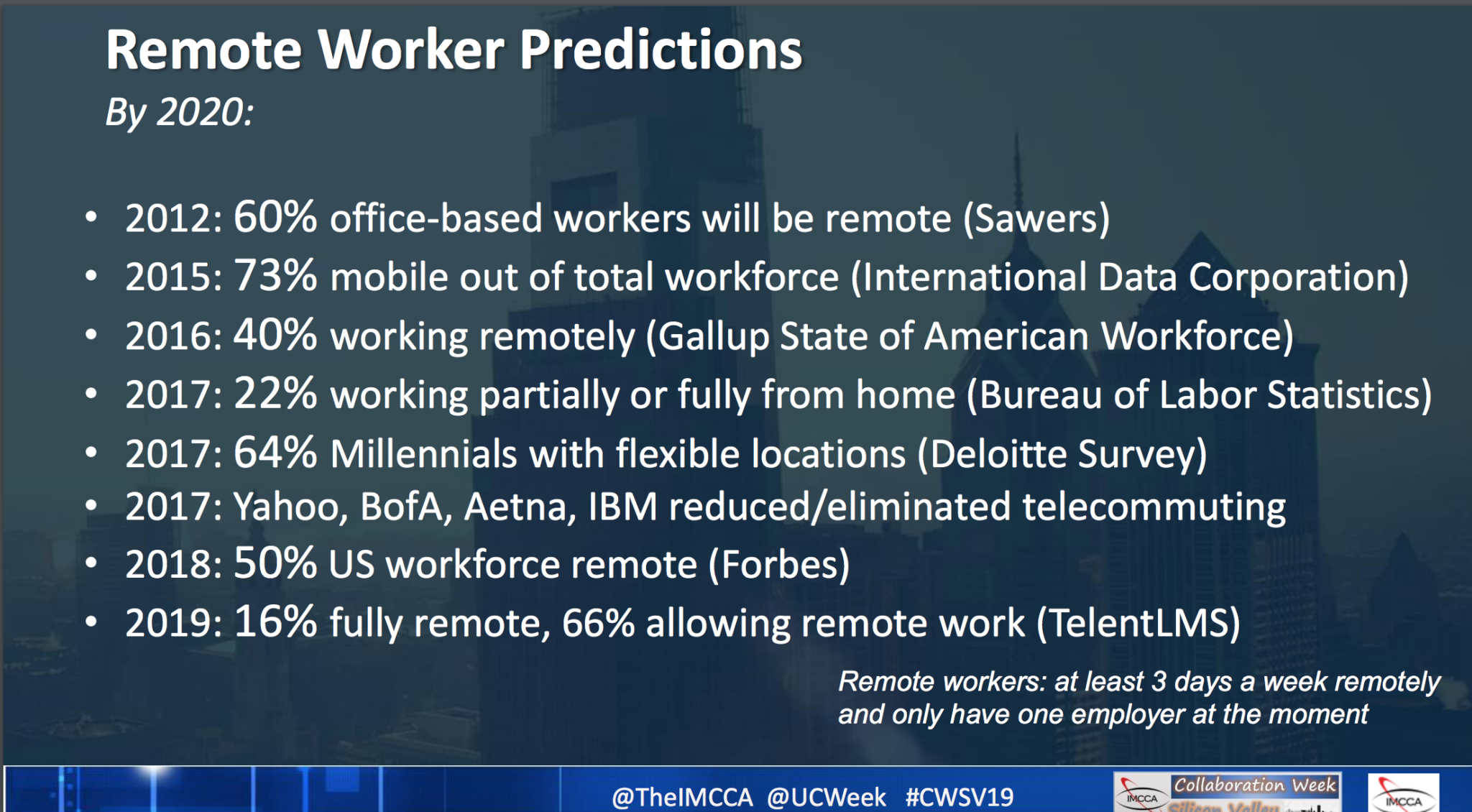
Regardless of this trend, the need for spaces to meet and collaborate in are not going away. But rather than traditional conference rooms, companies are investing in spaces that mimic the kind of public spaces we flock to when in the mood to collaborate.
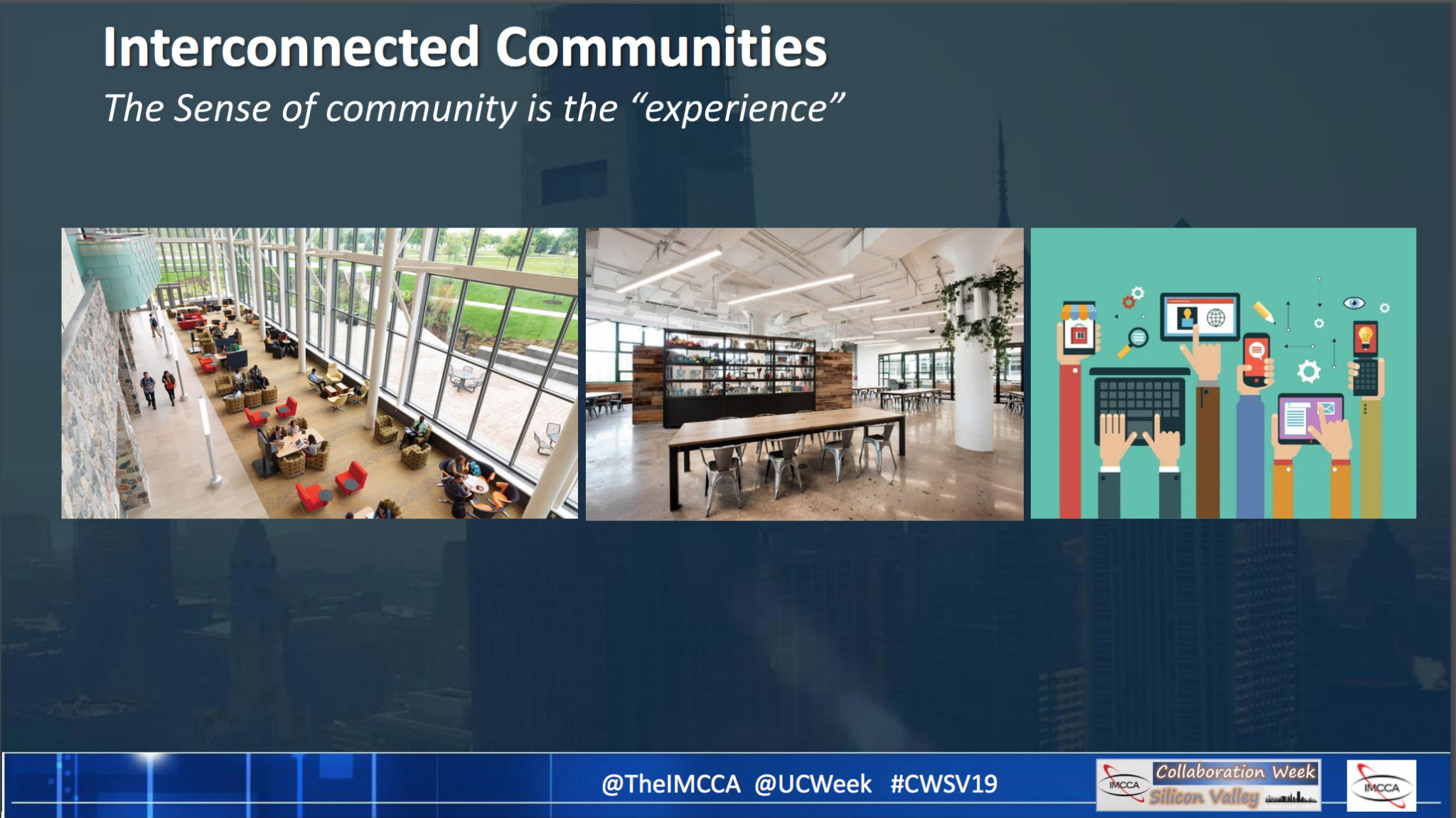
When booking these spaces, Mark defined a hierarchy of needs related to how things work.
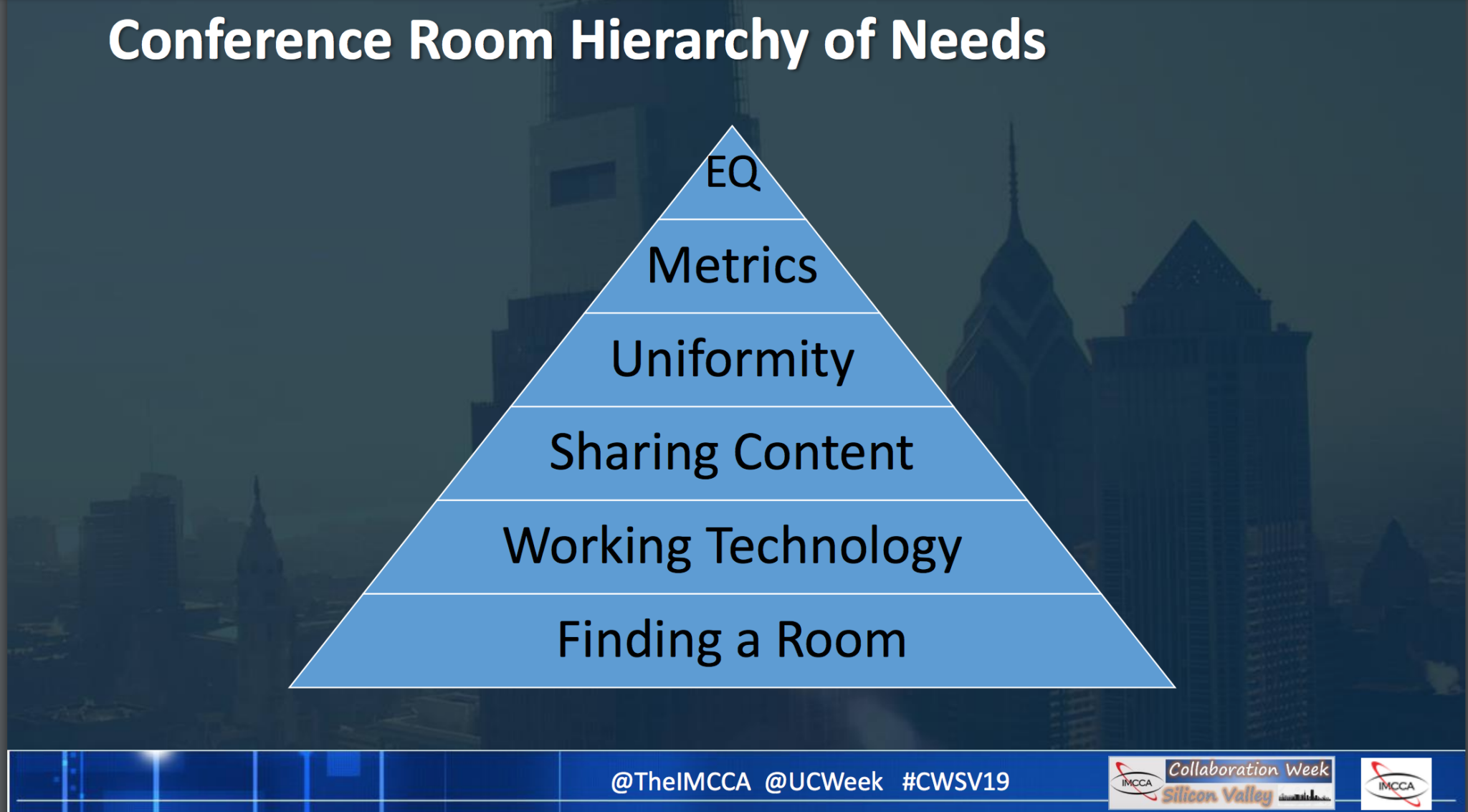
At Vyopta, we have a point-of-view, of course on where metrics should be in this hierarchy, and we talk about that a bit in this webinar related to the importance of data in workplace transformation.
Mark wrapped up his presentation with a call to create spaces that support both real-time collaboration and the ability to complete deep work.
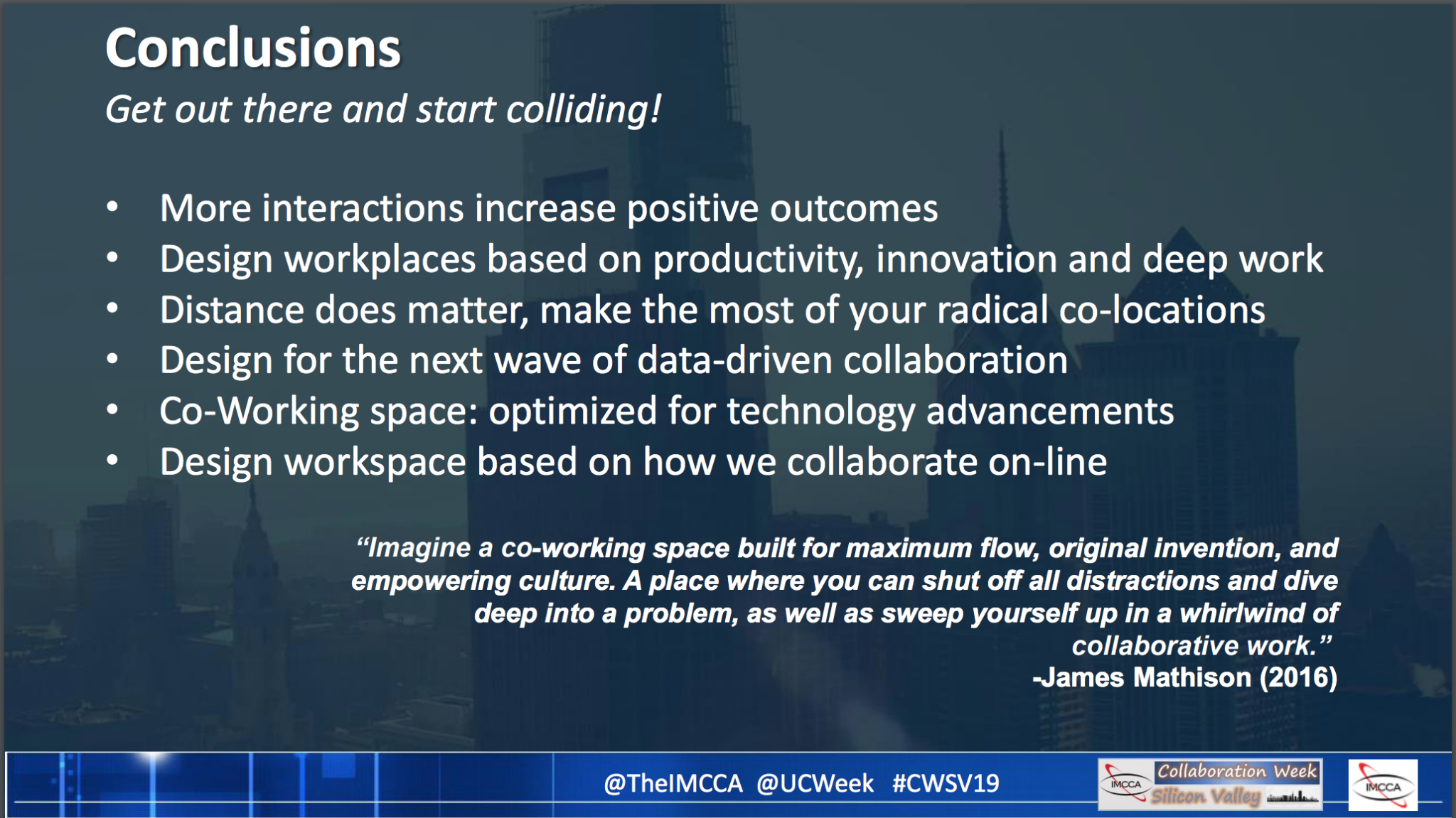
We thought the IMCCA did a great job with this event, and I personally learned a great deal about the industry and viewpoints of so many of its players. They’ll be doing all of this again in New York in early 2020 so keep an eye out for more details.
Join us on November 14th for a webinar with Frost & Sullivan titled: Are you getting the most out of your meeting spaces?





